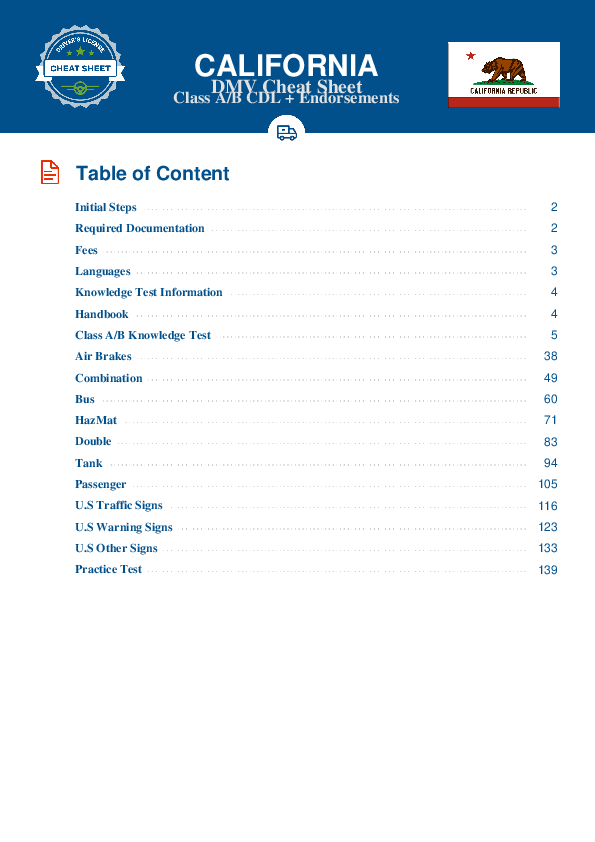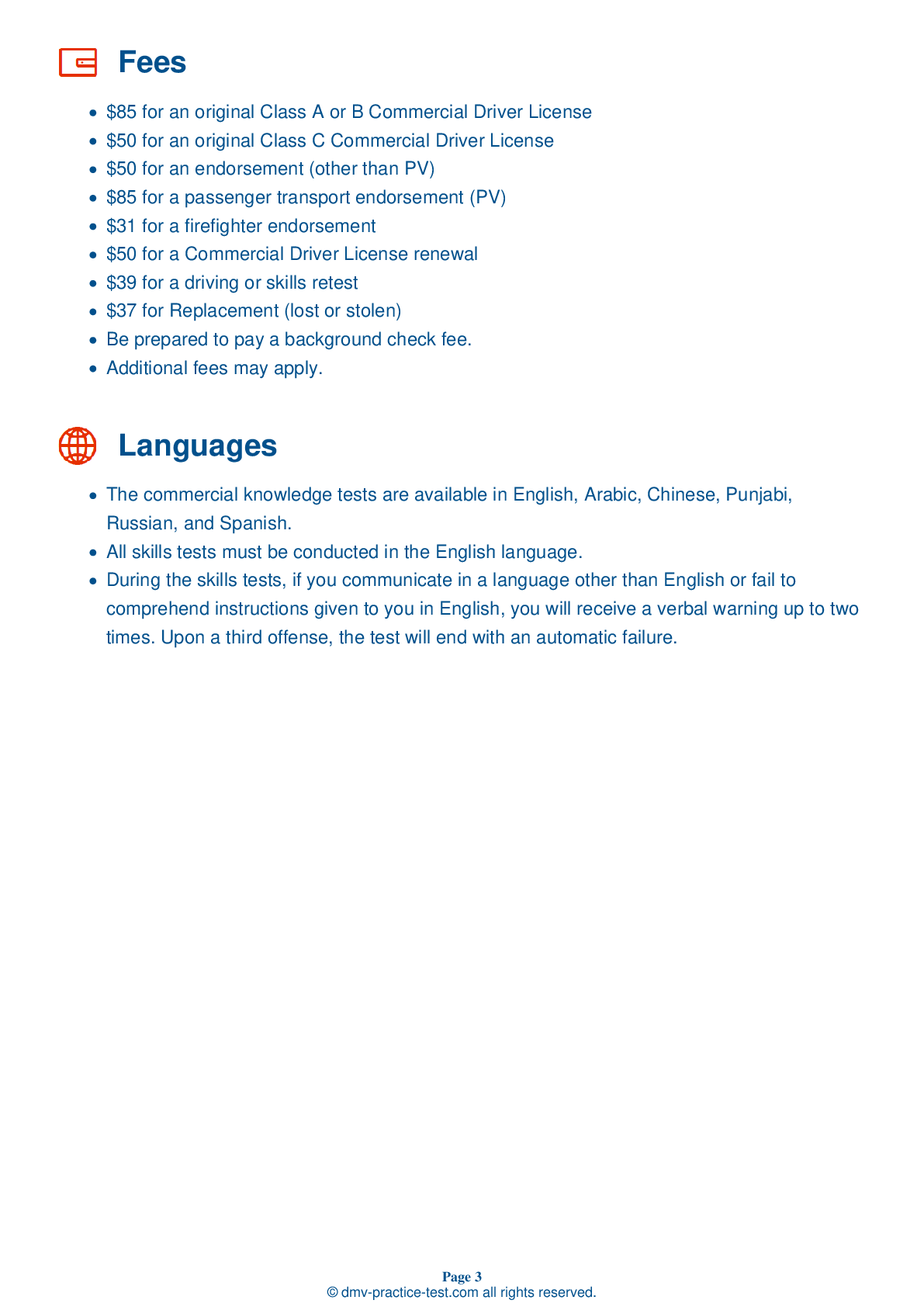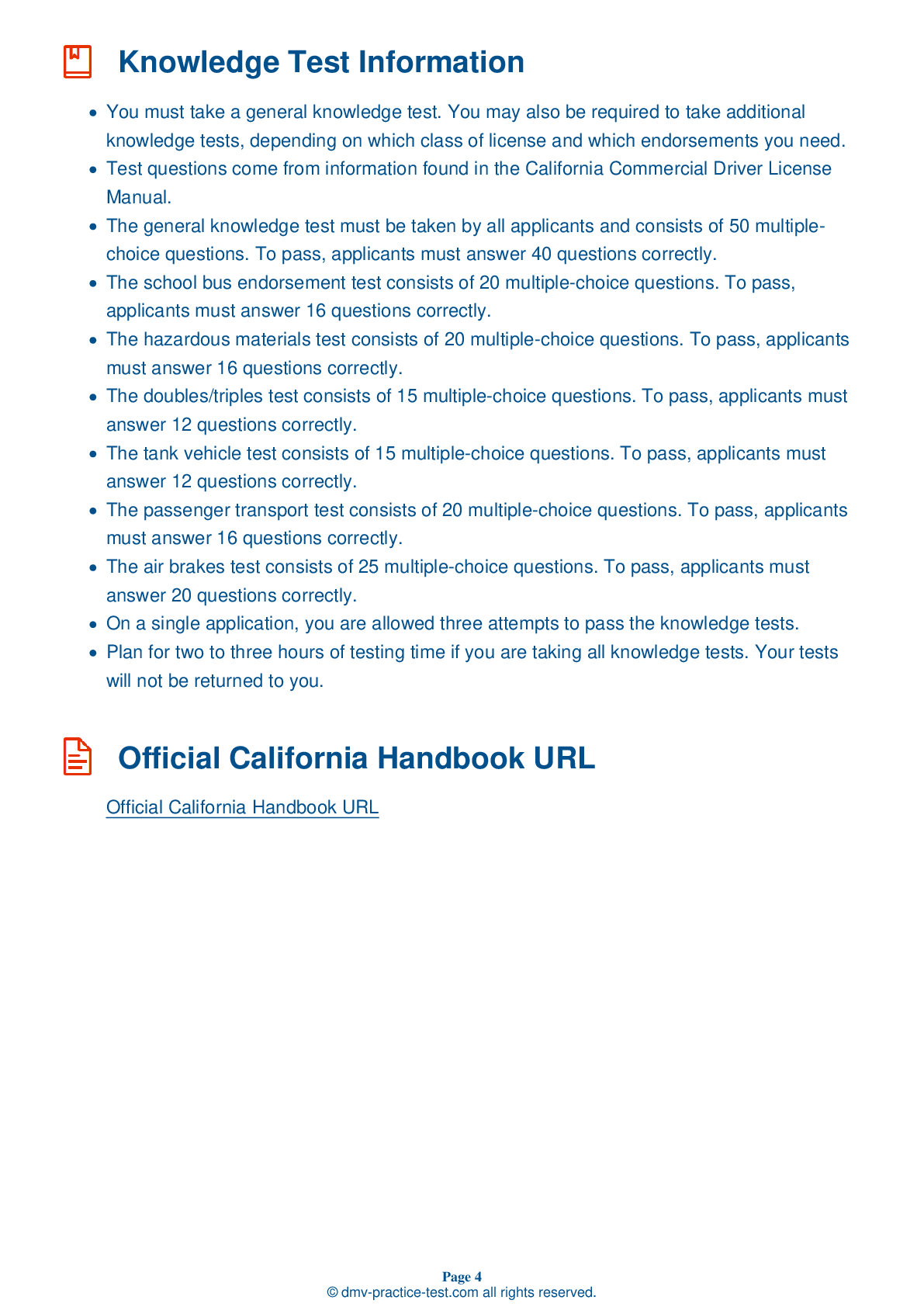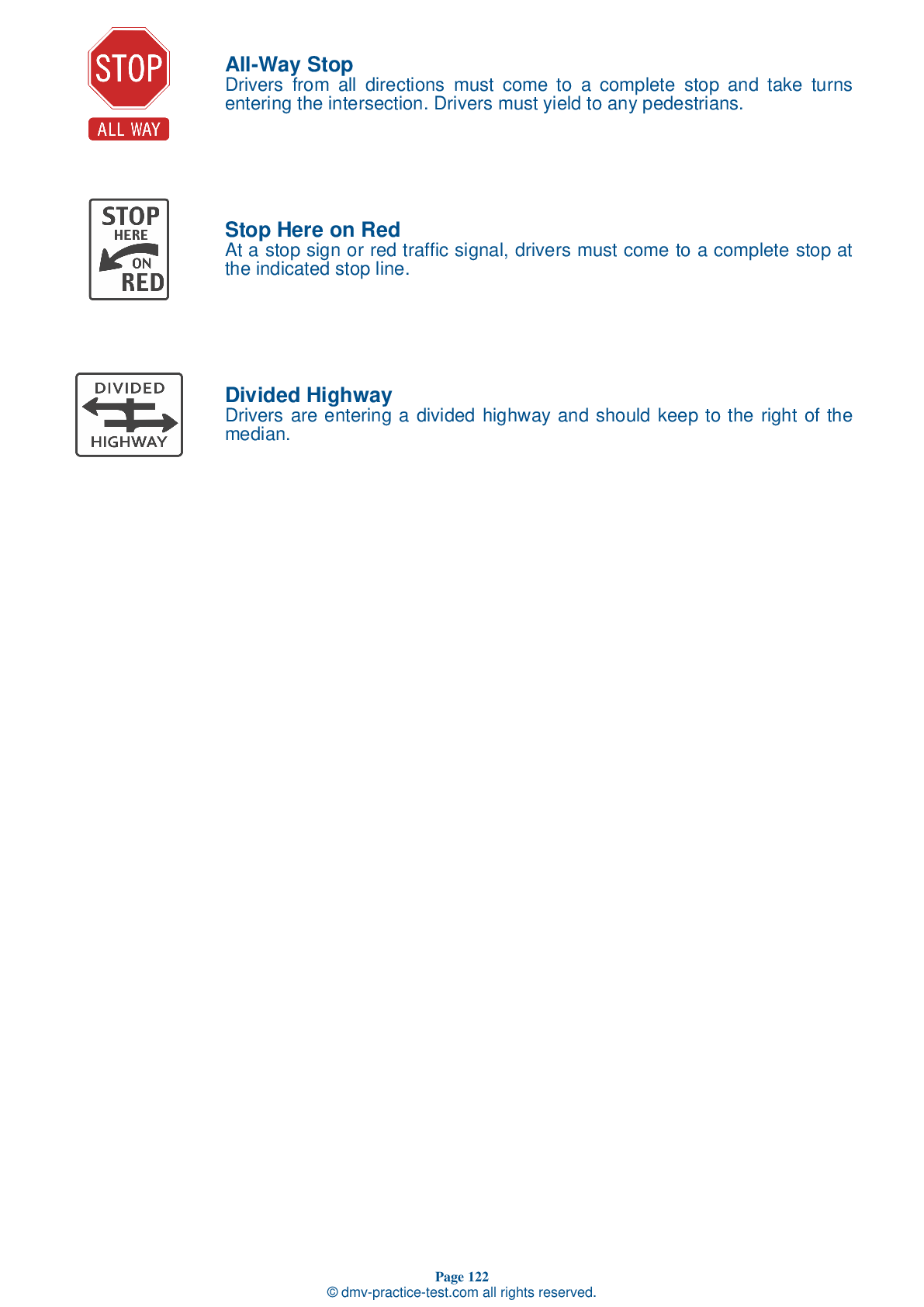Air Brakes #2
Air Brakes Endorsement Test | California 2025 #2 Page 3 of 4
Train for FREE online with our California CDL air brake test. The official exam test consists of several obligatory parts, with all of them checking your knowledge of different blocks of road rules. If you need to obtain a CA Class A/Class B driver license in 2025, practice as much as possible. Free sample tests published on our website will help you check and improve your knowledge and boost your grades. Please bear in mind that the requirements for CDL may vary from state to state.
25
20
20
13 . ____ make up the emergency brake system.
In an air brake system, there are three different braking systems: a service brake system, a parking brake system, and an emergency brake system. The emergency brake system uses parts of both the parking and service brake systems.
14 . What can happen if the air pressure gets too low in an air brake system?
Pressing and releasing the brake pedal unnecessarily can let air out of the braking system faster than the compressor can replace it. Air brakes may cease to work effectively if the pressure becomes too low.
15 . What must be on all air tanks with air-braked vehicles?
All air tanks on air-braked vehicles must have a check valve located between the air compressor and the first reservoir. The valve allows air to flow in only one direction and helps keep air from leaving the air compressor if the compressor develops a leak.
16 . During an inspection, slack adjusters on S-cam brakes should not move more than:
Check each slack adjuster after parking on level ground, setting wheel chocks, and disengaging the parking brake. Pull the slack adjusters to make sure they do not move more than about one inch from where the push rod is attached. If they move more than one inch, they may be out of adjustment and will need to be fixed.
17 . A slack adjuster should move no more than ____ from where it is attached to the push rod.
Before a trip, you should check each slack adjuster after parking, setting wheel chocks, and disengaging the parking brake. Pull the slack adjusters to make sure that they do not move more than about one inch from where the push rod is attached. If they move more than one inch, they may be out of adjustment and will need to be fixed.
18 . Why should you regularly drain the air tanks?
Compressed air usually contains a certain amount of moisture and compressor oil, which can build up in the air storage tanks and damage the brake system. The tanks should be drained to clean out these accumulations. On a tank with a manual drain valve, draining should be performed at the end of each day of driving.
2025 California | Frequently Asked Questions
In California, a Commercial Driver's License (CDL) Class A license allows the holder to operate any combination of vehicles with a Gross Combination Weight Rating (GCWR) of 26,001 pounds or more, provided the Gross Vehicle Weight Rating (GVWR) of the vehicle(s) being towed exceeds 10,000 pounds. This includes tractor-trailers, truck and trailer combinations, and livestock carriers.
A Class A CDL license in California allows the holder to operate vehicles such as tractor-trailers, truck and trailer combinations, tanker vehicles, livestock carriers, and flatbeds. These are typically vehicles with a Gross Combination Weight Rating (GCWR) of 26,001 pounds or more where the vehicle being towed exceeds 10,000 pounds.
To obtain a Class A CDL license in California, you must be at least 18 years old (21 for interstate driving), have a regular driver's license, pass a vision test, and complete a written knowledge exam. Additionally, you must complete a truck driving training course and pass the CDL skills test, which includes a pre-trip vehicle inspection, a basic control skills test, and an on-road driving examination.
In California, you must be at least 18 years old to apply for a Class A CDL for intrastate transport (within California only). However, to drive across state lines or to carry hazardous materials, you must be at least 21 years old. These age requirements are consistent with federal regulations.
Endorsements for a Class A CDL license are not required but can be beneficial. They allow the license holder to operate special types of vehicles. Common endorsements include H for hazardous materials, T for double/triple trailers, P for passenger vehicles, and N for tank vehicles. Each endorsement requires passing a separate knowledge test.
The Class A CDL skills test in California consists of three parts: a pre-trip vehicle inspection, a basic control skills test, and an on-road driving examination. The pre-trip inspection tests your knowledge about your vehicle and its operation. The basic control skills test assesses your ability to maneuver the vehicle in various situations. The on-road test evaluates your driving skills in traffic.
Class A CDL license holders in California must adhere to various regulations. They're limited to the type of vehicle specified on their license and endorsements. They must follow hours-of-service laws, which regulate driving time to prevent fatigue. Additionally, they're subject to stricter Blood Alcohol Content (BAC) rules, with a limit of 0.04% compared to the standard 0.08%.
Yes, in California, the written Class A CDL test can be taken in languages other than English. The California Department of Motor Vehicles (DMV) offers the test in multiple languages. However, the Federal Motor Carrier Safety Administration requires that all CDL holders understand and read English to ensure road safety.
Yes, you can request accommodations for the Class A CDL written test if you have a disability. The California Department of Motor Vehicles (DMV) provides reasonable testing accommodations under the Americans with Disabilities Act (ADA). You must submit a "Request for Accommodations" form to the DMV detailing your specific needs.
Yes, if you don't pass the Class A CDL written test in California, you can retake it. However, you must wait at least three days before retaking the test. Keep in mind that you'll have to pay a retest fee each time. If you fail three times, you'll need to start the application process over again.



